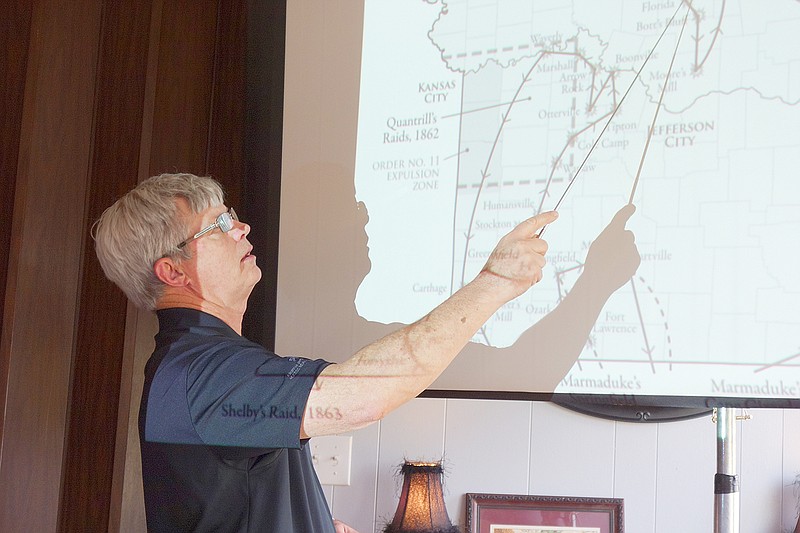Callaway County's boys in gray participated in some of the Civil War's key Missouri battles, according to a local scholar.
Joseph Whit McCoskrie, co-author of "The Civil War Missouri Compendium: Almost Unabridged" spoke Wednesday about the county's involvement in the war. The story is much bigger than the incident that led to the founding of the so-called Kingdom of Callaway, he said.
In 1861, Callaway County was home to hemp and tobacco plantations, along with the owners of some 4,000 slaves. Unsurprisingly, the county overwhelmingly supported the South, with 1,500 Callawegians joining up. Many served in the Missouri Brigade and the Missouri State Guard. However, 250-350 volunteers joined the Union army.
"You can see already that Callaway County boys were fighting each other in the Civil War," McCoskrie said.
About 130 black men also joined the fight, he added.
"They served honorably," he said. "Their casualty rates, at about 35 percent, were as high or higher than their white counterparts."
Located between the Missouri River, the Pacific Rail Road and the North Missouri Railroad, Callaway County had access to several major transportation routes. That meant it was a prime location for raiding, which many militias, brigades and guerrilla groups relied on for supplies.
"If they're not raiding, they're not going to survive long," he added.
Things heated up fast: the Overton Run skirmish, which took place four days before the Battle of Bull Run in 1861, spilled over into Fulton. The federal government declared those who'd joined the South to be wanted men, and found their job in Fulton easy: the Missouri Telegraph, predecessor of the Fulton Sun, had printed a muster of the men who'd enlisted.
However, the Union didn't like how the paper had covered Overton Run. Union forces ransacked the offices. Looking back, McCoskrie said the Telegraph's coverage was actually fairly balanced, and remained so even after a Union marshall took control of the paper's ink and newsprint supply.
"Journalists today could use (its owner) John Williams as a role model," McCoskrie said.
Another major Callaway County incident came toward the end of the war in November 1864. In defiance of Union Brigadier General John Schofield's orders that Missourians should join the Union army, 200 Callaway County men joined the Confederate army. In Audrain county, Union militia forces from Wellsville raided the Four Mile Creek camp.
Seven young men from Callaway County were chased to nearby Brown's Farm, where they were caught, ordered to dismount and executed.
Callawegians abroad
Recruits from Callaway County participated in battles across the state, McCoskrie said.
They were present at Wilson's Creek near Springfield, a fierce battle that resulted in a Confederate victory.
"They'll serve right there in the midst of the bloodiest fighting at Bloody Hill," he said.
Volunteers also fought at the battles of Lexington and Carthage.
They also participated alongside guerrilla groups in Anderson's Raids, a last-ditch attempt to distract the Union army while it marched on Georgia.
On the Union side, Callawegians ended up in the Third Iowa Calvary fighting at Moore's Mill and in Odon Guitar's 9th Missouri State Militia.
Among the numerous battles, skirmishes and raids, McCoskrie said, Missourians suffered just as much as those in the way of Maj. Gen. William Sherman's March to the Sea.
Missouri started the Civil War with a population of about 1.2 million, he added.
"By the war's end, 20 percent had left the state," McCoskrie said.
Check back soon for McCoskrie's account of the beginning and aftermath of the Kingdom of Callaway.

